Plants boost all gardens with their color, texture, seasonal interest and beauty. It can be a challenge to squeeze more plantings into a small space, so you must think creatively to design a compact garden that maximizes vegetation. With a few simple tweaks — from planting a vertical garden to using small trees — you can bring more lushness to a small garden.
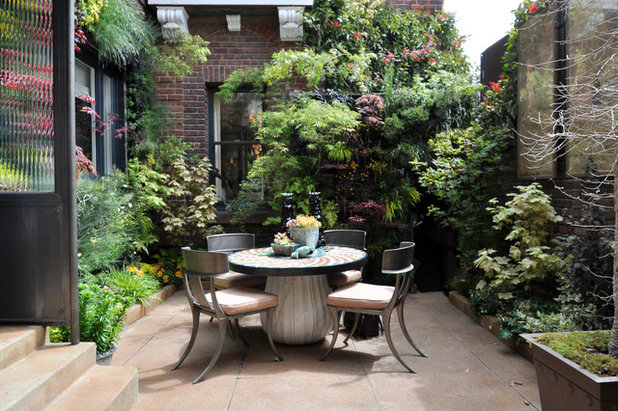
Janet Paik
1. Work with easy plants. There are many plants that will thrive in a small space or container. The goal is to select ones that will thrive but not outgrow the space or become unwieldy. There are three main types to consider:
- Slow-growing: Plants with slower growth rates will require less maintenance, such as pruning.
- Dwarf varieties: Many woody shrubs are cultivated to grow to a more demure height, including dwarf crimson bottlebrush (Callistemon citrinus ‘Little John’) and dwarf Encore azaleas.
- Spreaders and creepers: Vines and ground covers that have a spreading or creeping growth habit are easy to train onto a vertical surface or over the sides of a container. Their advantage for small spaces is that they will spread and climb to fill the space without much work on your part.
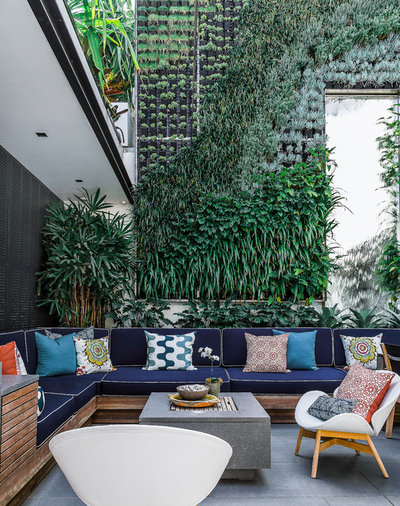
Marylou Sobel Interior Design
2. Go vertical. A vertical garden is an obvious choice for a small urban courtyard flanked by tall vertical surfaces. There are many products on the market to help you grow vertically, and choosing the best one depends on your garden’s microclimate and what kind of plants you want to grow. Other ways to grow vertically include creating an espalier from small trees or shrubs, growing vines on a trellis or creating a flying hedge with pleached trees.
10 Reasons to Love Vertical Gardens
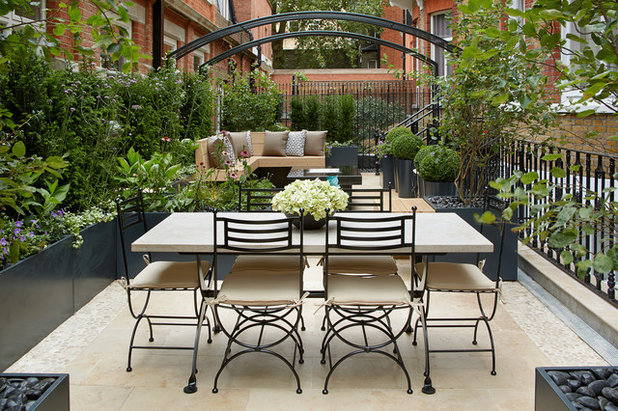 3. Use large, thin containers.
3. Use large, thin containers. Larger containers can sometimes accommodate small trees and dwarf shrubs together. Another advantage of using a larger container in place of several small ones is that a larger planter has a more efficient footprint in a tight space. Look for containers that have slim profiles and are made of thin but strong materials like reinforced resin, galvanized steel or Cor-Ten.
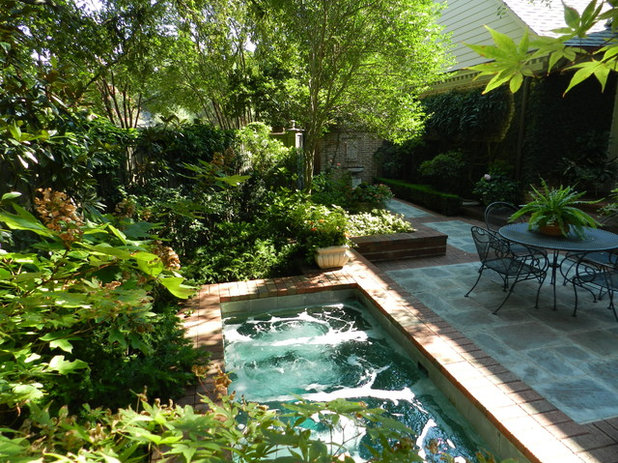
Dahlberg Landscape Design Studio
4. Create layered plantings. This tropical garden looks extra lush because of its multitiered plantings. Raised beds feature plants of different heights, including smaller trees, shrubs of varying types and ground covers. The plants pour over one another and reach toward the light to fill this small courtyard with lush textures.
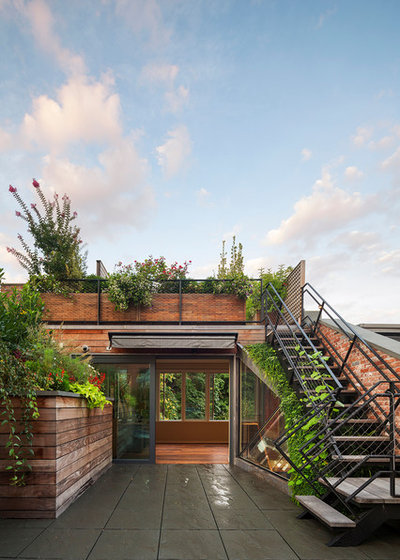
Andrew Franz Architect PLLC
5. Plant in unlikely spots. There are so many little spaces where a small plant can grow: gaps in the paving, unused corners, along the back of a seating area, trailing up a stair railing or cascading down from a balcony. Think about ways to plant in a small soil volume that will have a big impact.
This multilevel rooftop garden integrates plants in creative ways. Notice how plants are tucked in under the stairwell and spill over the top railing.
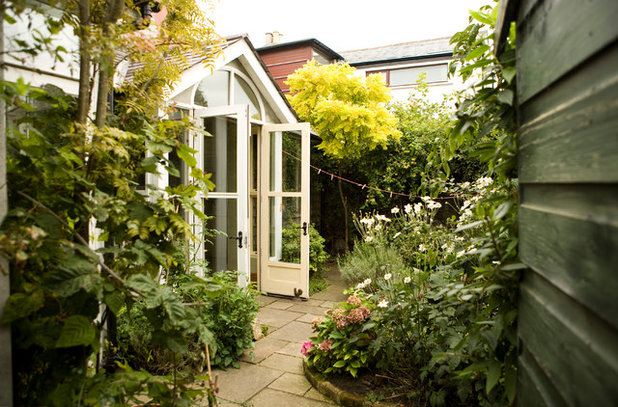
ABA Architects
6. Plant small trees. A tree that grows to 10 or 12 feet tall can provide some shade and create a great top layer of greenery. A small tree will also create a better sense of a lush enclosure, which can help make an outdoor garden more comfortable on a hot day. As it grows, it may also create enough shade that you can plant shade-loving plants in its shadow.
5 Best-Behaved Trees to Grace a Patio
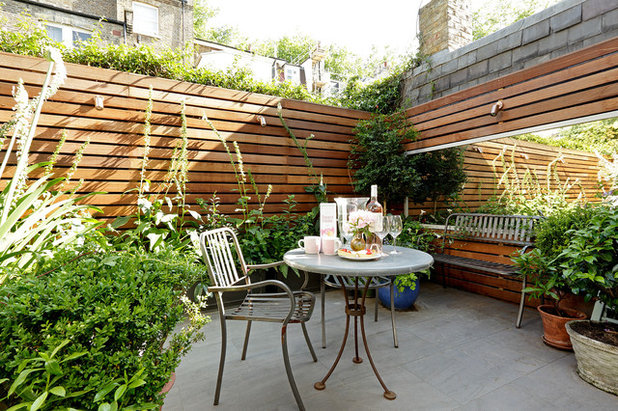
Cue & Co of London
7. Use bold plants. If you have extremely limited growing space, use plants with dramatic forms to create a unique planted space. The tall flower spikes shown here bring height and drama to this little garden. Other ideas for bold plants include perennials with tall flowers, profusely flowering vines, fan palms and cycads, funky cactuses, upright ferns and plants with large, showy leaves.
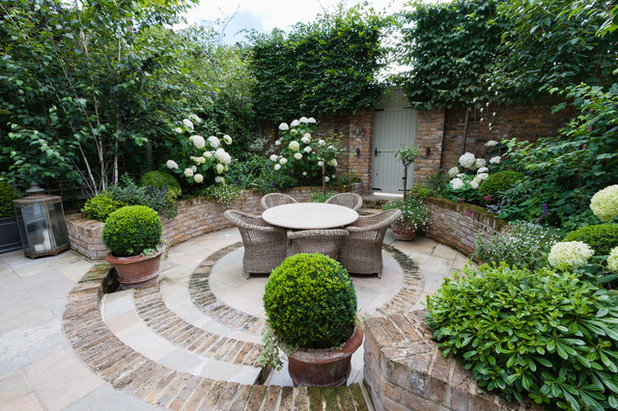
KR Garden Design
8. Integrate permanent raised beds. A permanent raised bed is a good investment for a small space, because it’s easy to add shrubs and small trees to a raised planter that’s intended to last for many years. Shown here is a brick masonry circular raised bed wrapping around a seating area. The raised bed allows for larger soil volume for hydrangeas and small pollarded trees.





